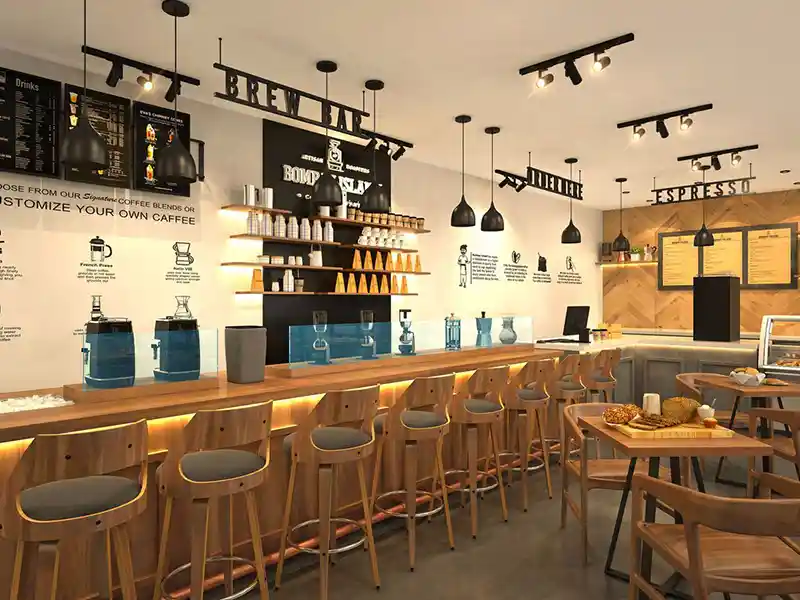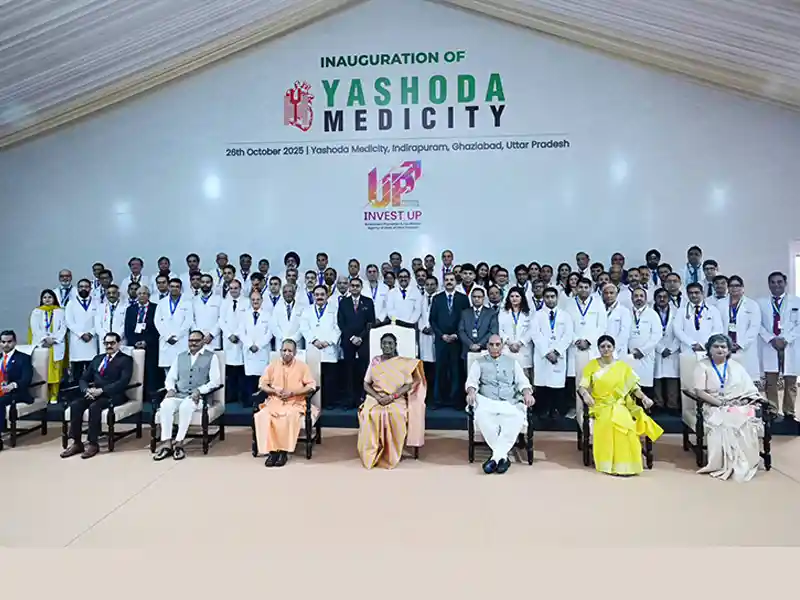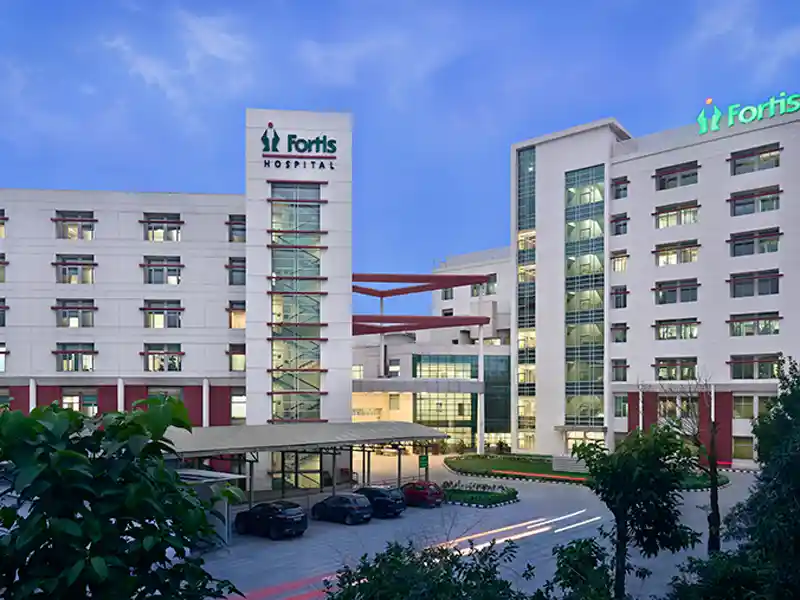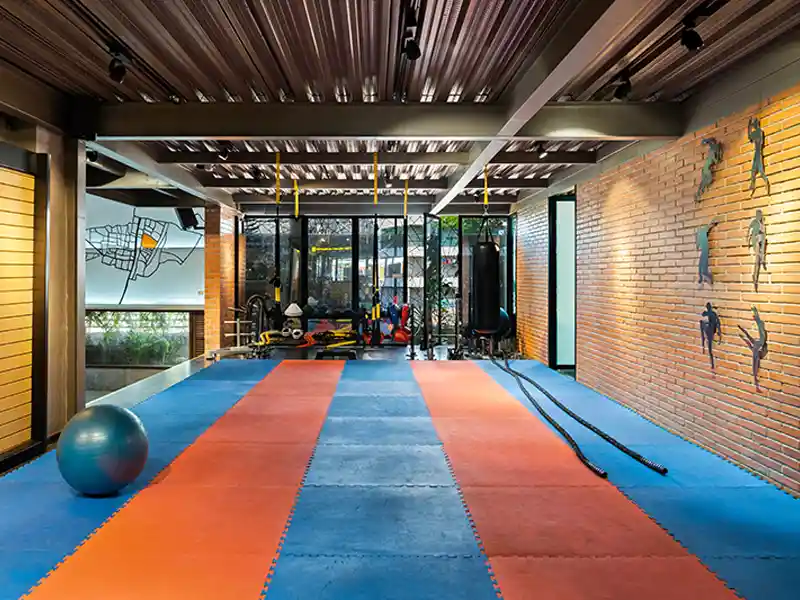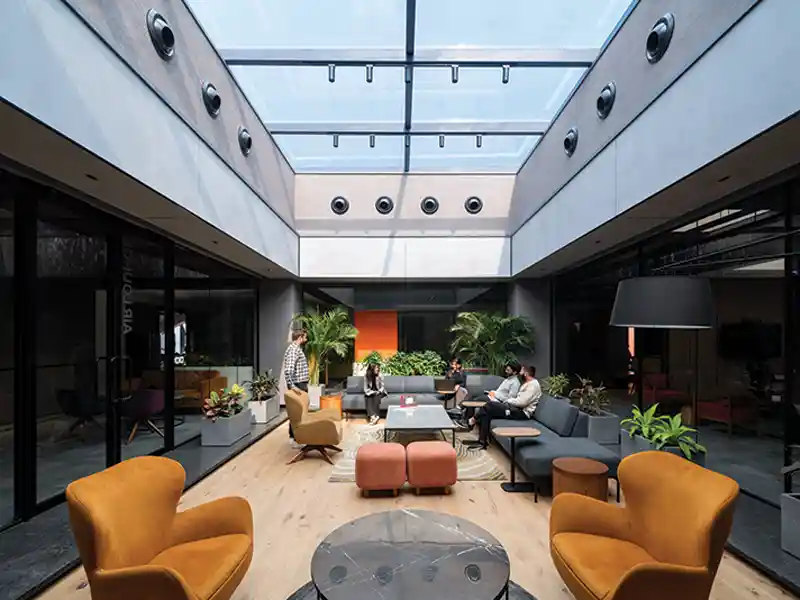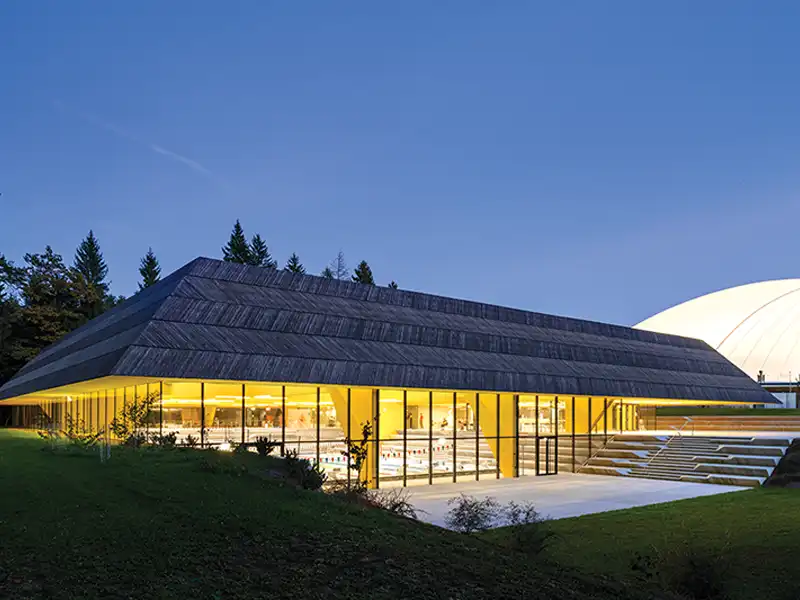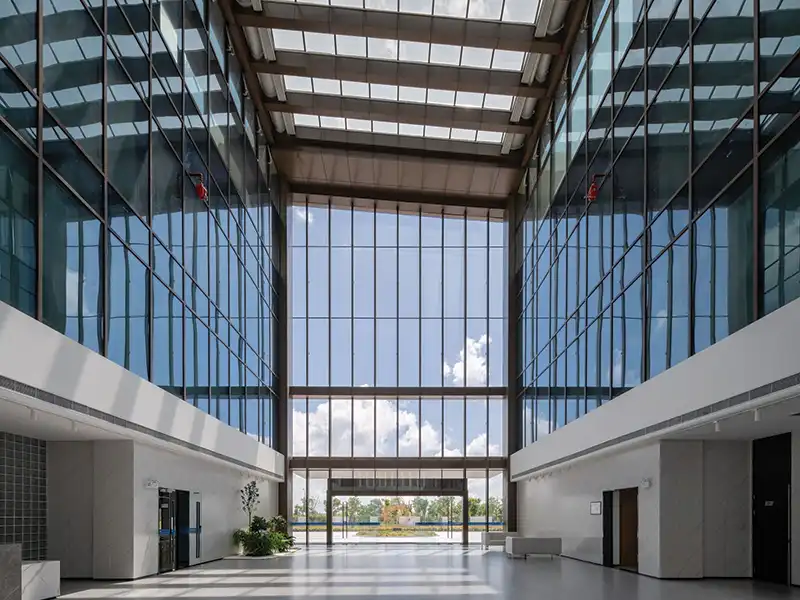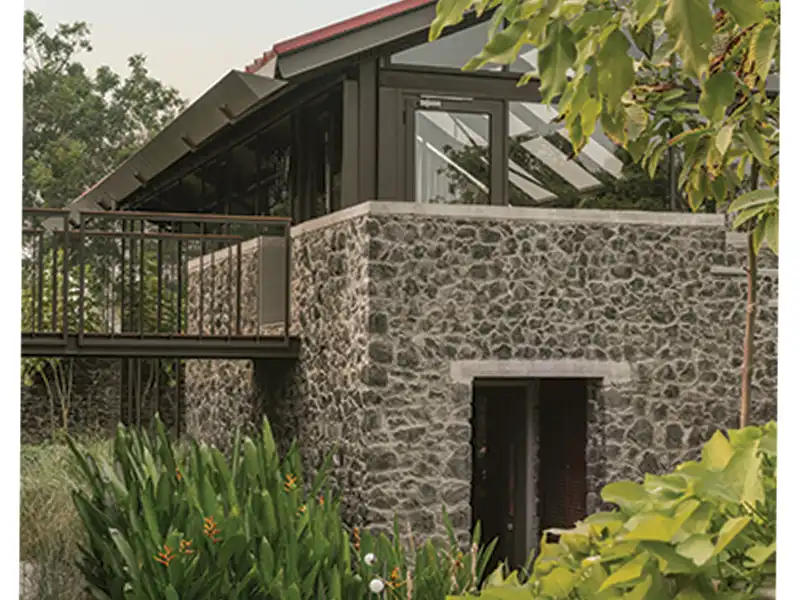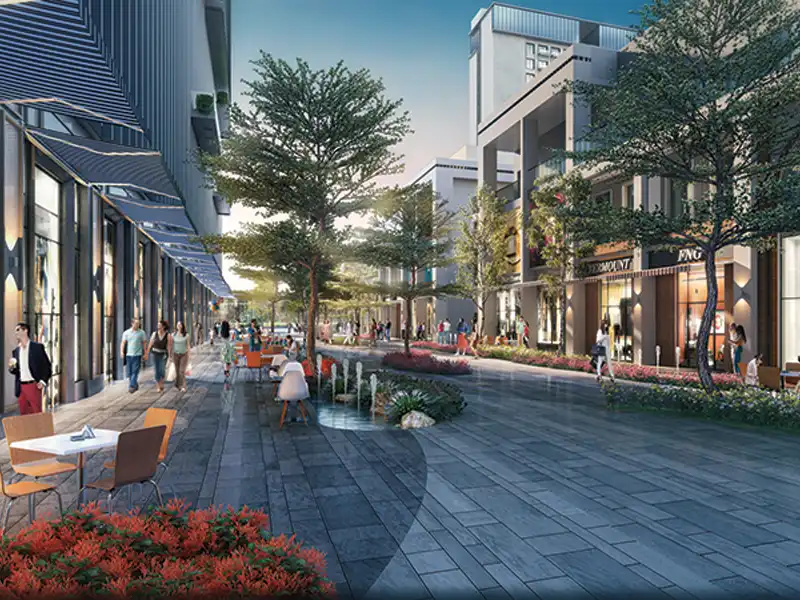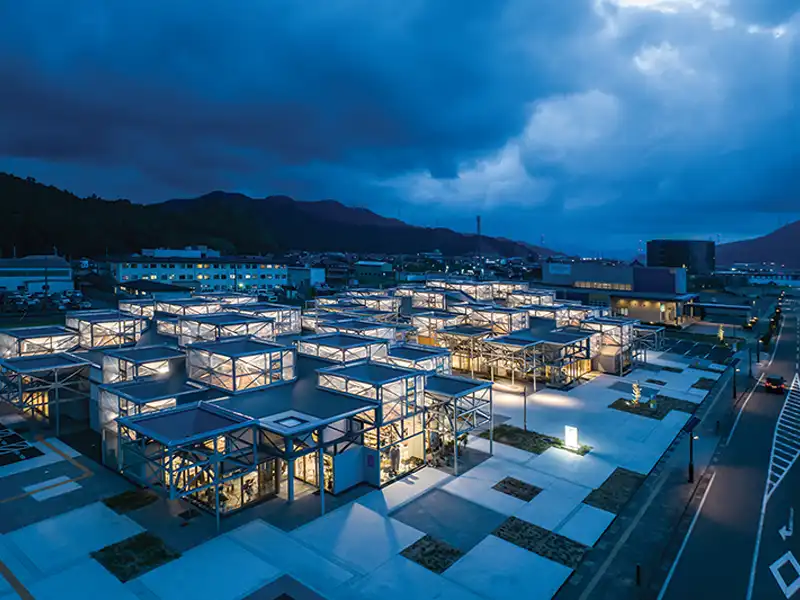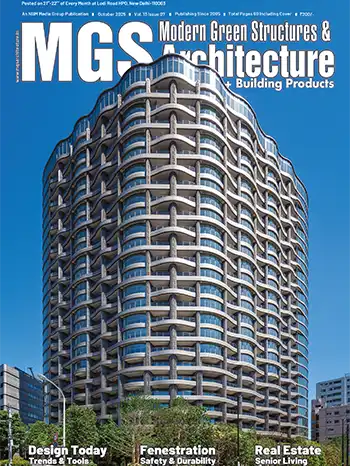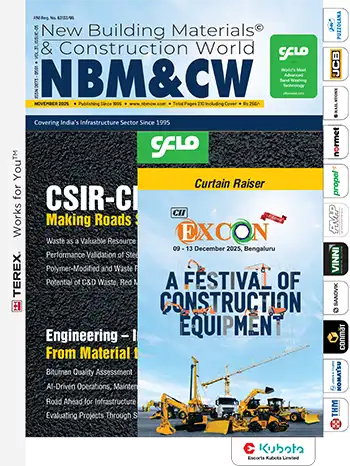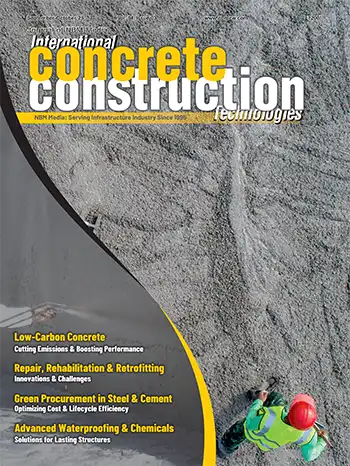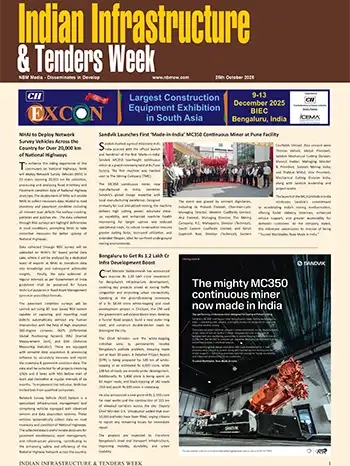
Located in Ningwu, Shanxi province, China, the surroundings of the project feature newly constructed industrial buildings, dry landscape, and coal mines. The concept was to develop the factory as an introverted building that would recreate its own natural environment. Besides satisfying all functional requirements, the building generates surprising experiences for visitors.
Brick walls enclose and hide the various technical spaces of the factory in an opaque ground floor, while a simple concrete volume on the top hosts public spaces of the program. Patios and large gardens pierce the whole building, providing natural light and creating impressive spatial dilatations within the factory. Central production spaces also receive natural light from concrete sheds, opening the roof to the north light.

The system of brick walls starts from the front of the factory, where a landscaped area is voluntarily left open for use by the local community, with benches and water pools for kids to play. Brick walls emerge slowly from the benches to become the property fence of the factory, and the façade of the entire building.
The shape taken by the brick walls forms and defines the different entrances of the factory, each with a specific function: raw materials delivery, product loading, staff and visitor entry. Separated into distinct lanes, staff and visitors do not cross paths inside the factory. While workers enjoy a functional organization, visitors enter a planned spatial experience. The production line is showcased to the visitor in an elevated corridor overlooking the workshop.

The dormitory for employees, set-up at the back of the factory, is conceived as an invisible architecture. The brick fence wall was thickened to host the building, and patios were created to bring light to the rooms, while still preserving their privacy. The space between the factory and the dorm becomes a garden in which a concrete table and square seats are set up.

The choice of construction materials carries a strong meaning: the use of grey brick creates a deep relationship with the site using local construction methods. Exposed concrete, on the other hand, emphasizes the modernity of the building, enabling structure and architecture to bind together.
The landscape design is also fully integrated in the design process. Rainwater is collected on the roof and redirected to water pools on different levels through cast-in-place concrete water exhausts, making its natural circulation part of the experience of the space. The water flows up to the entrance of the factory, where a waterfall, combined with a 12m cantilever concrete logo wall, invites visitors to enter.

Across the process, some regulatory issues were resolved through innovative design solutions. Fire-fighting regulations required a water container on the roof, and an independent element was created in the form of a sculptural cantilevered stainless-steel box.
Photo credit: SCHRAN
Source: V2com

